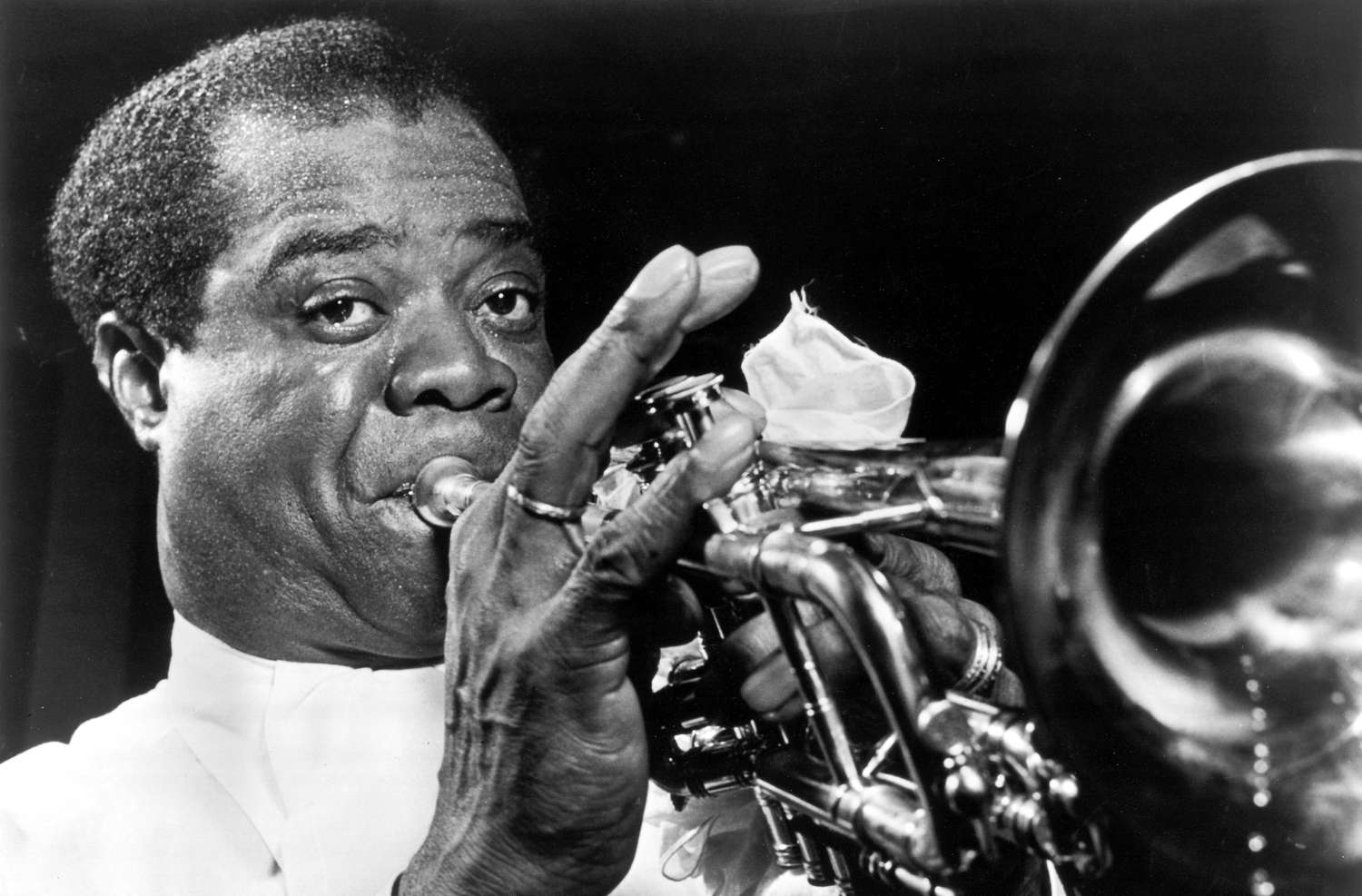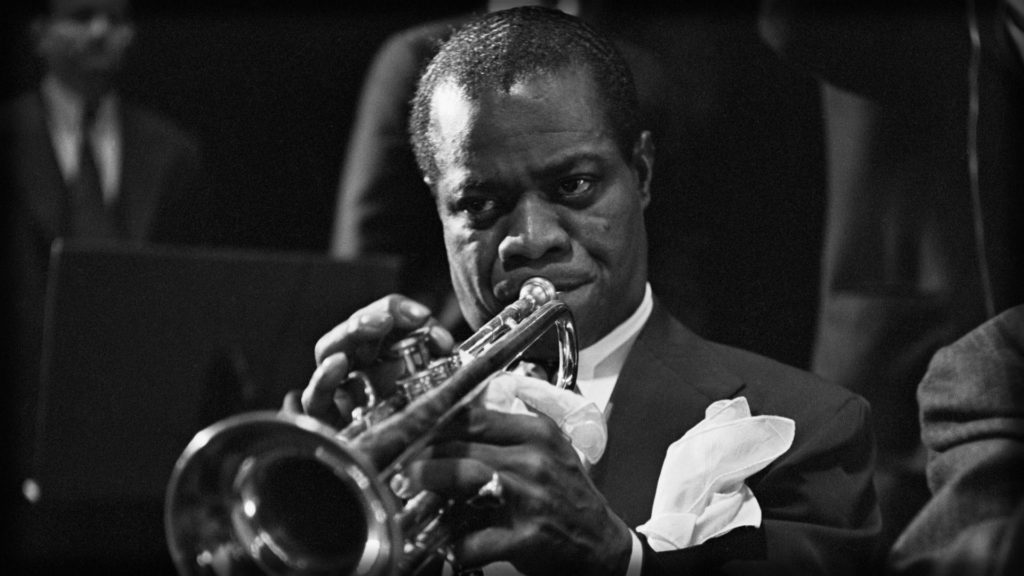Louis Armstrong Net Worth - From New Orleans To Hollywood
Louis Armstrong was one of the most influential jazz musicians of the 20th century, known for his unique trumpet style and gravelly voice. In this article, we will explore Armstrong net worth and how he earned his fortune.
Author:Alex MercerReviewer:Nathanial BlackwoodApr 07, 2023228 Shares3K Views

Louis Armstrong was one of the most influential jazz musicians of the 20th century, known for his unique trumpet style and gravelly voice. He had a prolific career, recording over 1,000 songs and appearing in several films. But how much was Louis Armstrong net worth? In this article, we will explore Armstrong net worth and how he earned his fortune.
Quick Facts About Louis Armstrong
| Name | Louis Armstrong |
| Birthday | August 4, 1901 |
| Profession | Singer |
| Net worth | $10 million |
Early Life Of Louis Armstrong
Louis Armstrong was born on August 4, 1901, in New Orleans, Louisiana, to a poor family. His parents separated when he was young, and he was raised by his grandmother in a rough neighborhood known as the "Battlefield." Armstrong's early life was marked by poverty and hardship, and he dropped out of school at the age of 11 to help support his family.
Despite his difficult circumstances, Armstrong found solace in music. He began playing the cornet at a young age and was largely self-taught. He would often practice on a discarded instrument he found in a pawnshop, and his talent soon became evident. By the age of 13, Armstrong was playing in a local band, and by 1918, he had joined the band of Joe "King" Oliver, one of the most famous musicians in New Orleans at the time.
Oliver became Armstrong's mentor and taught him much of what he knew about music. Armstrong quickly became one of Oliver's most talented students, and he soon began to develop his own unique style. He was known for his improvisational skills and his ability to play high notes with ease, which became a hallmark of his later career.
Career Of Louis Armstrong

Louis Armstrong - What A Wonderful World
Louis Armstrong's career spanned over five decades, during which he became one of the most influential figures in the history of jazz music. He began his professional career in the 1920s, playing in various bands and recording with his mentor, Joe "King" Oliver.
In the 1930s, Armstrong became a solo artist and began recording some of his most famous songs, including "Stardust," "Body and Soul," and "Hello, Dolly!" He also appeared in several films, including "Pennies from Heaven" and "High Society," and became a popular entertainer on television.
Throughout his career, Armstrong's unique trumpet style and gravelly voice became his trademark, and he was known for his improvisational skills and his ability to connect with audiences through his music. He also became an influential figure in the civil rights movement, using his platform to speak out against racism and discrimination.
Louis Armstrong Net Worth
Louis Armstrong's net worth at the time of his death in 1971 was estimated to be $10 million. During his career, Armstrong earned a significant amount of money from his recordings, concerts, and appearances in films and television shows.
Armstrong was known for his business acumen and was actively involved in managing his finances. He established several businesses, including a nightclub and a record label, which helped to increase his wealth.
In addition to his music career, Armstrong also made several successful investments in real estate and other ventures, which contributed to his net worth.
Despite his wealth, Armstrong was known for his generosity and philanthropy, and he used his resources to support various causes, including education and healthcare.
He established the Louis Armstrong Educational Foundation, which provides scholarships and other resources to young musicians, and he made numerous donations to hospitals and other charitable organizations.
Today, Louis Armstrong's legacy as a musician and philanthropist continues to be celebrated, and his net worth serves as a testament to his talent and his impact on the music industry.
Real Estate Properties Of Louis Armstrong
Louis Armstrong was known for his shrewd business sense and was an astute investor in real estate. Over the course of his career, he acquired several properties in New York City, including his famous home in Corona, Queens, which is now a museum dedicated to his life and legacy.
The Corona home, which Armstrong called his "castle," was purchased in 1943 and became his primary residence for the rest of his life. The property, which is now known as the Louis Armstrong House Museum, includes a main house and a smaller guesthouse, as well as a garden and a garage. The museum features exhibits on Armstrong's life and career and is open to the public for tours.
In addition to his home in Corona, Armstrong owned several other properties in New York City, including an apartment in Manhattan and a house in the suburb of Queens Village. He also owned a home in New Orleans, which was destroyed in Hurricane Katrina in 2005.
Philanthropic Works Of Louis Armstrong
Louis Armstrong was known for his philanthropy and his dedication to giving back to the community. Throughout his career, he supported a variety of causes, including education and healthcare.
In 1952, Armstrong established the Louis Armstrong Educational Foundation, which provides scholarships and other resources to young musicians. The foundation has awarded millions of dollars in scholarships to students from around the world, helping to nurture the next generation of jazz musicians.
Armstrong was also a generous donor to hospitals and other charitable organizations. He made numerous donations to the Jewish National Fund, which supports the development of land in Israel, and he supported the New Orleans Symphony Orchestra, which honored him with a special concert in 1964.
In addition to his financial contributions, Armstrong also used his celebrity status to raise awareness for social and political causes. He spoke out against segregation and racism, and he was a vocal supporter of the civil rights movement. He used his music and his platform to promote unity and understanding, and he worked tirelessly to break down barriers and promote equality.
Today, Louis Armstrong's legacy as a philanthropist continues to inspire others to give back to their communities and to support the arts and other worthy causes. His generosity and dedication to helping others will always be remembered as an important part of his legacy.
Interesting Facts About Louis Armstrong
- Armstrong was born on August 4, 1901, in New Orleans, Louisiana. His parents were both of African-American and Native American descent, and he grew up in poverty in a rough neighborhood known as "the Battlefield."
- Armstrong got his start in music by playing in street bands and performing in clubs in New Orleans. He was influenced by the music of Buddy Bolden, a legendary cornet player, and by the jazz music that was popular in the city at the time.
- Armstrong's big break came in 1922 when he was invited to join King Oliver's Creole Jazz Band in Chicago. He quickly became the star of the band and began developing his own unique style of playing the trumpet.
- Armstrong's first big hit was the 1926 recording of "Heebie Jeebies," which featured his scat singing, a style of improvisation in which he used nonsense syllables to create melodies.
- Armstrong's recording of "Hello, Dolly!" in 1964 became his biggest hit, reaching the top of the charts and making him the oldest artist to have a #1 hit. The song stayed on the charts for 22 weeks and won Armstrong a Grammy Award.
- Armstrong was also an actor, appearing in several films, including "High Society" and "Pennies from Heaven." He was known for his charismatic personality and his ability to connect with audiences on screen.
- Armstrong was a passionate advocate for civil rights and used his platform to speak out against racism and discrimination. He was an inspiration to many African-American musicians and activists who followed in his footsteps.
- Armstrong was known for his trademark handkerchief, which he used to mop his brow while performing. He was also known for his colorful stage outfits, which included brightly colored suits and hats.
- Armstrong's home in Queens, New York, which he called his "castle," is now a museum dedicated to his life and legacy. The Louis Armstrong House Museum features exhibits on his music, his philanthropy, and his impact on popular culture.
- Armstrong was a prolific recording artist, with over 3,000 recordings to his name. His music continues to inspire and influence musicians around the world, and he is remembered as one of the greatest jazz musicians of all time.
People Also Ask
What Was Louis Armstrong's Most Famous Song?
Louis Armstrong's most famous song is arguably "What a Wonderful World," which was released in 1967 and has since become a timeless classic.
What Instruments Did Louis Armstrong Play?
Louis Armstrong was primarily known for playing the trumpet, but he also played the cornet, vocals, and occasionally the trombone.
What Was Louis Armstrong's Impact On Jazz Music?
Louis Armstrong is credited with popularizing the swing and bebop styles of jazz and was a pioneer of scat singing. He also influenced countless other musicians and helped to bring jazz into the mainstream.
Conclusion
Louis Armstrong net worth at the time of his death was estimated to be $10 million, but his contributions to the music industry were priceless. His impact on jazz music continues to be felt today, and his legacy as a philanthropist and cultural icon lives on through the Louis Armstrong Educational Foundation.
Armstrong's influence on music and culture will continue to inspire future generations, making him one of the most important figures in the history of American music.

Alex Mercer
Author
Alex Mercer is a seasoned author and analyst specializing in wealth research, with a keen focus on evaluating the net worth of individuals across various industries. With over a decade of experience in financial analysis and wealth assessment, Alex has developed a nuanced understanding of the factors that contribute to an individual's financial status, from investments and assets to market trends and economic policies. His work involves in-depth reviews and analyses, providing insightful observations on wealth accumulation, management strategies, and the socio-economic implications of wealth distribution.
Throughout his career, Alex has become known for his ability to distill complex financial data into understandable and engaging narratives, making the subject of wealth and net worth accessible to a broad audience. His expertise is not just in numbers but in telling the stories behind them, highlighting the journeys, strategies, and decisions that lead to financial success or challenges. Alex's contributions to the field of wealth research are valuable resources for anyone looking to understand the dynamics of wealth in today's world, offering a unique perspective that bridges the gap between financial analysis and human interest.

Nathanial Blackwood
Reviewer
Nathanial (Nate) Blackwood is a distinguished financial journalist with a decade of experience in net worth analysis. He holds an Economics degree from the University of Finance and a Data Analysis certification, enabling him to blend thorough insights with engaging storytelling. Nate is known for making complex financial information accessible to a wide audience, earning acclaim for his precise and reader-friendly analyses. Beyond his writing, Nate is dedicated to financial literacy, actively participating in educational forums and workshops.
He is the founder of PureNetWealth, a platform that demystifies the financial achievements of public figures by exploring the strategies and decisions behind their fortunes. Nate's work bridges the gap between intricate economic concepts and the general public, inspiring a deeper understanding of wealth dynamics. Follow Nathanial Blackwood for essential insights into the financial narratives shaping our world.
Latest Articles
Popular Articles
